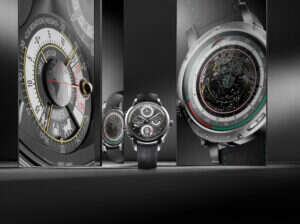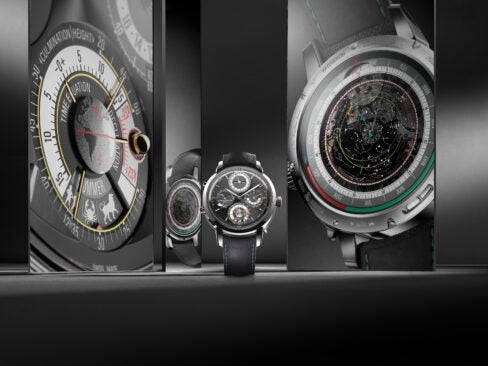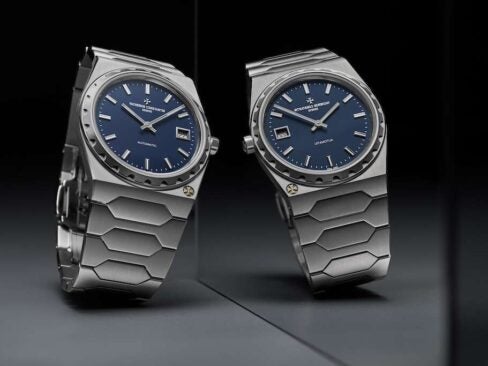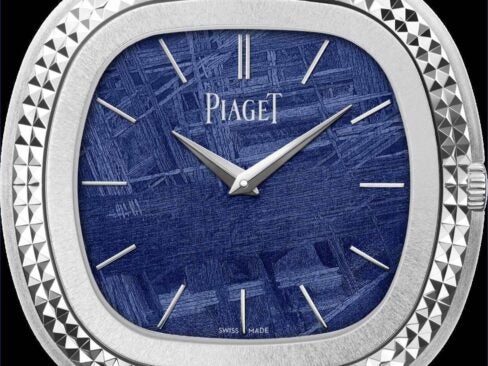
It’s one of the most esoteric complications and yet what it does is at the heart of how we keep track of time.
If you look at a watch with the equation of time complication you’ll see something puzzling: It will look, depending on what other complications are present, more or less like an ordinary watch, but you’ll also see a hand that points to a semicircular scale that reads from “-15” to “+15.”
That’s the most customary way of showing the equation of time, which is basically the difference between the time a sundial shows and the time a clock in the same location would show.
To understand the equation of time, it’s first necessary to understand how we reckon the passage of a day. For the average person, a day is simply 24 hours, but for an astronomer a day is defined more technically. A day is, of course, one full revolution of the earth on its axis, but how do you tell? You watch the sky. Pick a heavenly body like the sun and the amount of time it takes for the fiery star to return to the same point in the sky is a day.
So far, so good. The problem is that the amount of time it takes for the sun to return to the same point in the sky changes throughout the year. Why? Two basic reasons: The tilt of the earth on its axis (which is also responsible for the seasons) and the fact that our planet’s orbit isn’t perfectly round—it’s an ellipse, which means sometimes the earth travels a bit faster, sometimes a bit slower. The full explanation involves a bit of sight-line geometry, but the result of all this is that sometimes an astronomical day is over a quarter of an hour faster, or close to a quarter of an hour slower, than a day as reckoned by a clock.
A clock tells mean time. If you take the average of how long it takes for the sun to return to the same point in the sky, over the course of a year, you’ll get our standard 24-hour day. True solar time, on the other hand, changes from day to day. Knowing the difference between the two has no practical importance today, but in earlier times tables showing the difference between mean time and true solar time were critical for setting clocks. The sundial in a gentleman’s garden, or, more rigorously, the sightings taken by an astronomer (at, say, the Royal Observatory) could be converted with the help of tables showing the equation of time—or with the aid of a clock or watch showing the equation of time for any given day—into an exact reading of the time by which a precision clock could be set.
It’s as arcane a complication as can be, but for real lovers of watch and clockmaking history, there’s nothing quite like it. The equation of time complication is not difficult to make technically—a simple cam, whose profile is read by the finger of a spring-loaded lever, controls the position of the equation indication—but it’s one of the most romantic of watchmaking complications, thanks to its history and to its encoding of the earth’s movement through the heavens.
One of the most significant watches incorporating the complication is Audemars Piguet’s Jules Audemars Equation of Time, which shows the complication and also incorporates a perpetual calendar; that is, it automatically adjusts for the correct length of each month, including February, even in a leap year. Historically it’s important in another respect: It was the first and remains one of the few watches to show the time of sunrise and sunset at a location specified by the owner, making each watch something of a custom timepiece. Audemars Piguet is most famous for the instantly recognizable Royal Oak wristwatch. In 2010, it made the same complications offered in the roundcased Jules Audemars Equation of Time available in the Royal Oak’s iconic octagonal case as well.
The equation of time remains to this day a rare complication. Vacheron Constantin, the oldest watch manufacturer in continuous operation in Switzerland—the firm has been in existence since 1755—makes the Vacheron Constantin Patrimony Traditionelle Calibre 2253, one of the most complex timepieces. This watch shows the equation of time, as well as the time of sunrise and sunset (like the Jules Audemars Equation of Time, it is customized for a specific location) and a perpetual calendar. It also incorporates a tourbillon, visible through an opening in the dial, and an astonishing 14-day power reserve. Breguet offers the equation of time as well: The Reference 3477BA/1E/986, with perpetual calendar. Girard-Perregaux’s 1966 Annual Calendar and Equation of Time is one of the most beautiful equation of time watches containing the complication. An annual calendar does everything a perpetual does, except correct for the month of February. It offers nearly the same functionality but is much less complex and fragile.









